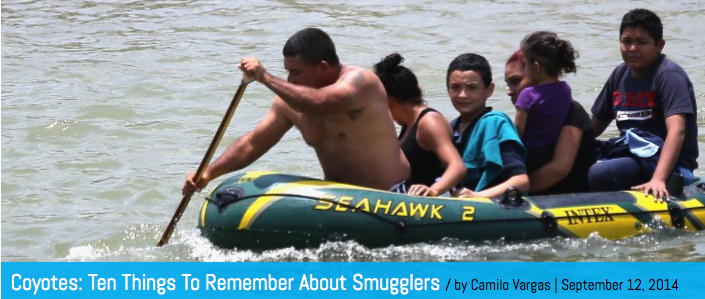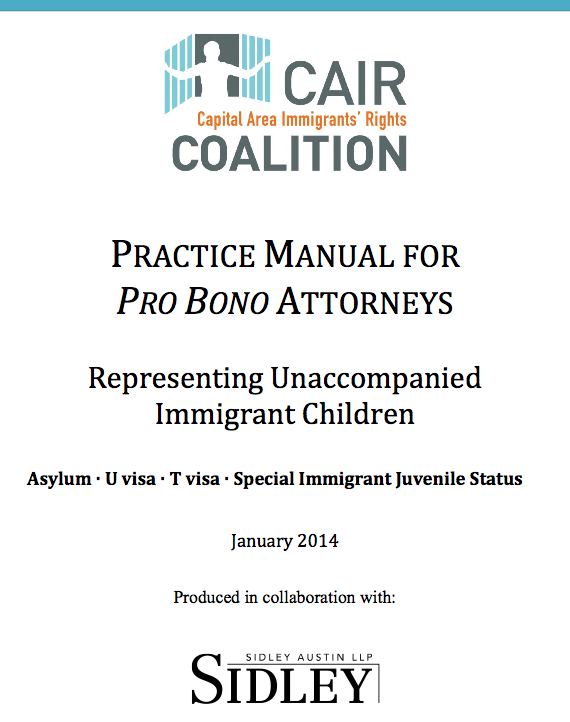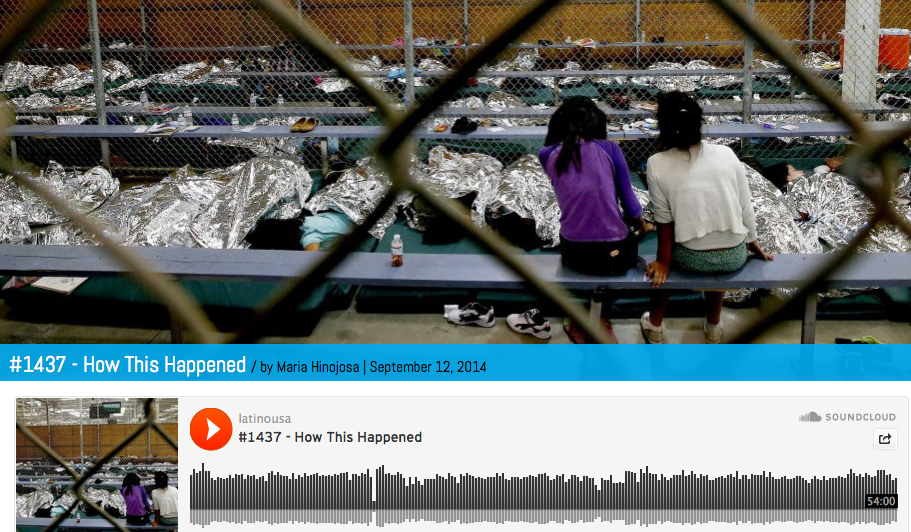
Radio program Latino USA has a segment on Coyotes: The Smugglers That Bring Kids To The Border from Sept. 12, 2014. Along with the radio piece, they also have a shortlist of the 10 things you need to know about the people who smuggle the unaccompanied minors to the US.
Listen to the full segment from Latino USA here:
[soundcloud url=”https://api.soundcloud.com/tracks/167426856″ params=”color=ff5500″ width=”100%” height=”166″ iframe=”true” /]
The thousands of Central American and Mexican children that have come to the US border in the past few years are not getting here on their own. Here are the ten things you need to know about so-called ‘coyotes’, the groups of human smugglers that cross migrants in the U.S. border.
1. According to ICE – Immigration and Customs Enforcement – human smugglers are not the same as human traffickers. Human smuggling involves the voluntary intention to get yourself smuggled across international borders, and a smuggler or coyote, is your facilitator. Human trafficking, on the other hand, is the transportation of people with the purpose of selling them or exploiting them in forced prostitution and other forms of labor. In trafficking, people are usually held against their consent.
2. Smuggling is still a crime, and it’s investigated by ICE, part of the Department of Homeland Security. Customs and Border Protection, another Homeland Security Agency, is in charge of enforcement.
3. Smugglers from Central America to the U.S. work as loosely knit groups of people who operate independently in each of the countries along the route. There is no hierarchical structure between them. Each group is in charge of keeping safe-houses, securing lodging and coordinating transportation for migrants in each of the countries. The money charged to migrants is split between the different groups along the route.
4. Human smugglers are not drug cartels or part of the drug cartels. Up to date, there have been no official reports of drug cartels in Mexico or Central America coordinating or taking over the logistics of human smuggling. Mexican cartels, however, do control the territories and the routes along the Mexican portion of the journey. The Zetas Cartel and the Gulf Cartel, for example, control the northeastern region of Mexico that borders Texas. They charge fees to the smugglers and the migrants for usage of the routes. Cartels are known to kidnap and kill smugglers and migrants who fail to pay fees.
5. According to ICE, the current price migrants pay to get themselves smuggled from Central America ranges between $5000 and $12,000. Some reports say the price of smuggling has risen in recent years as U.S. border security has been ramped up and the cartels have carved up routes and standardized fees for smugglers. The more migrants pay, the more they guarantee safe passage by paying off cartels, paying bribes to Mexican law enforcement, and the coverage of travel costs all along the route.
6. Migrants have traditionally seen smugglers as reliable service providers with strong links to the communities where they come from in Central America. Coyotes are well known in Central American townships, and the smuggling business has traditionally been built on trust. Knowing the right coyote is key to securing a safe journey.
7. There have been several reports of human smugglers selling migrants off to the cartels for kidnapping, trafficking, and recruitment. There have also been reports of smugglers abandoning migrants at some point in the journey after charging the fees. Gabriella Sanchez, an anthropologist who studies human smuggling, says these risks are higher when migrants use smugglers they don’t know and that are not connected to their communities. Also, the lower the smuggling fee, the higher the risk of being sold off or targeted.
8. After the child migrant crisis broke out earlier this summer, some reports say that smugglers spread rumors about a possible immigration amnesty. What is clear is that smugglers seem to know that Central American children who make it to the border are not immediately deported back, thanks to a 2008 anti-trafficking law and to the backlog of cases in immigration court.
9. According to a 2012 study by the United Nations Office on Drugs and Crime, a majority of migrants report using the services of a smuggler. In the case of children migrants, Elizabeth Kennedy, a Fulbright scholar and researcher on child migration in El Salvador, estimates that more than half the children are smuggled using coyotes.
10. U.S. authorities began cracking down on smugglers in response to the surge in unaccompanied minors. ICE launched ‘Operation Coyote’ in June, capturing 363 smugglers and seizing over $800,000 in smuggling profits. U.S. law enforcement agencies have cooperated with Central American authorities, making high profile busts. The US is also finding public awareness campaigns to prevent families from sending their children on the journey to the U.S. border.


